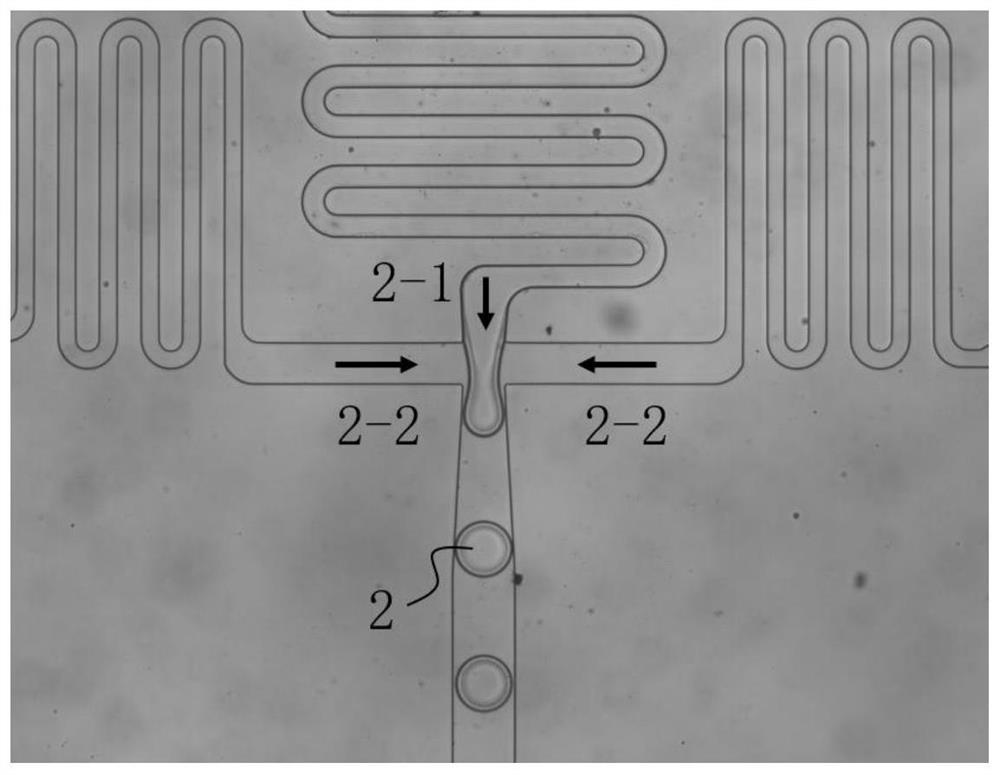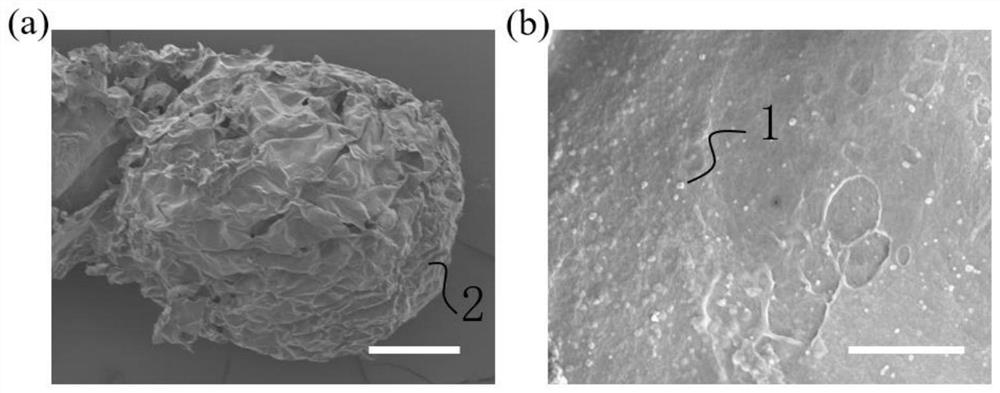Photoresponsive gel microspheres for dPCR-method nucleic acid detection and application of photoresponsive gel microspheres in Escherichia coli detection
A photoresponsive, gel microsphere technology, applied in the field of molecular biology and microfluidics, can solve the problems of limited promotion, and achieve the effect of overcoming easy evaporation, good biocompatibility and dispersion, and simple process
- Summary
- Abstract
- Description
- Claims
- Application Information
AI Technical Summary
Problems solved by technology
Method used
Image
Examples
Embodiment 1
[0039] This embodiment provides a light-responsive phase-changeable composite gel microsphere for nucleic acid detection by dPCR method, which is prepared according to the following method:
[0040] (1) Preparation of SiO 2 @MXene@SiO 2 composite nanomaterials
[0041] The mother liquor (75mL ultrapure water, 480mL absolute ethanol, 45mL ammonia water, 6mL seed crystal) was mixed in a three-necked flask with mechanical stirring, and A was added simultaneously by a syringe pump at a rate of 6 seconds / drop and 4 seconds / drop. liquid (1200mL of anhydrous ethanol, 960mL of tetraethyl orthosilicate) and liquid B (360mL of ultrapure water, 1560mL of anhydrous ethanol, 240mL of ammonia water), and finally centrifugal cleaning to obtain silica nanoparticles;
[0042] Then as figure 1As shown, through the oxidation reaction of dopamine hydrochloride, several particles were adhered together, and a polydopamine layer was modified on the surface; then placed in a 1 mg / mL MXene aqueous ...
Embodiment 2
[0048] This embodiment provides a light-responsive phase-changeable composite gel microsphere for nucleic acid detection by dPCR method, which is prepared according to the following method:
[0049] (1) Preparation of SiO 2 @MXene@SiO 2 composite nanomaterials
[0050] The mother liquor (75mL ultrapure water, 480mL absolute ethanol, 45mL ammonia water, 6mL seed crystal) was mixed in a three-necked flask and mechanically stirred, and A liquid (1200 mL of anhydrous ethanol, 960 mL of tetraethyl orthosilicate) and B solution (360 mL of ultrapure water, 1560 mL of anhydrous ethanol, 240 mL of ammonia water), and finally centrifugally washed to obtain silica nanoparticles.
[0051] Then as figure 1 As shown, several particles were adhered together through the oxidation reaction of dopamine hydrochloride, and the polydopamine layer was modified on the surface; then it was placed in a 1 mg / mL MXene aqueous solution for mechanical stirring for 6 hours, and the surface coated with M...
Embodiment 3
[0057] The light-responsive phase-changeable composite gel microspheres prepared in Example 1 were used to detect Escherichia coli.
[0058] Through programmed illumination, 95°C for 1min, (95°C for 30s, 55°C for 60s, 68°C for 60s)*35 cycles, 68°C for 3min. Finally, the fluorescence signal of the microspheres is read by a fluorescence microscope, and the fluorescence ratio is counted. Estimate the content of initial E. coli nucleic acid molecules.
[0059] Figure 4 (a) the photo-responsive phase-changeable gel microspheres prepared in Example 1 of the present invention, Figure 4 (b) is the result of the fluorescence signal of the microspheres after photothermal dPCR, in which the concentration of E. coli DNA template is 0.5 copies / droplet (consistent with the theoretical DNA concentration of the sample to be tested), and the composite nanomaterials converge in the sol to form cluster. Figure 5 The results of Sanger sequencing of the amplified products validated the exper...
PUM
 Login to View More
Login to View More Abstract
Description
Claims
Application Information
 Login to View More
Login to View More - R&D
- Intellectual Property
- Life Sciences
- Materials
- Tech Scout
- Unparalleled Data Quality
- Higher Quality Content
- 60% Fewer Hallucinations
Browse by: Latest US Patents, China's latest patents, Technical Efficacy Thesaurus, Application Domain, Technology Topic, Popular Technical Reports.
© 2025 PatSnap. All rights reserved.Legal|Privacy policy|Modern Slavery Act Transparency Statement|Sitemap|About US| Contact US: help@patsnap.com



